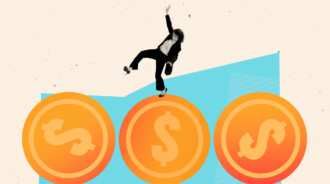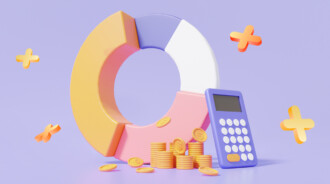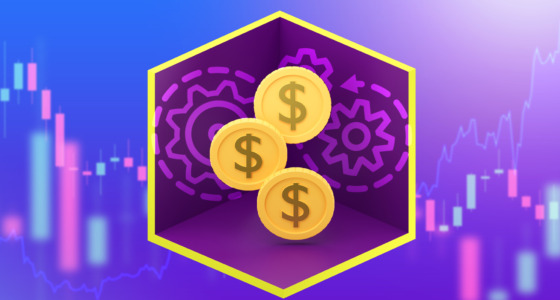

The first U.S. dollar bills made of silver were issued in 1878. For the paper currency of the country, they are among the most sought-after series. Silver certificates are still used occasionally today. That it’s slightly different from the standard one-, two-, and five-dollar notes catches people’s attention. In this post, we’ll look at the evolution of this currency and how much it’s worth now.
What is a silver certificate dollar bill?
In the late 19th century, the federal government of the U.S. issued this certificate as a form of legal tender. Their roots may be traced back to the 1860s when the U.S. emerged as a significant silver producer. The silver certificate is a special historical item since it was issued at the start of a new monetary system in the United States.
At that time, an individual holding a silver certificate could, as the name suggests, exchange it for the specified amount of silver. Without actually buying the precious metal, investors could get a piece of it thanks to a single certificate.
In the 21st century, these certificates are still valid legal tender; however, they can no longer be redeemed for silver. Collectors continue to seek reproductions of silver certificates, which has led to their value rising above their face value (such as $1) on the market.
Even though the certificates no longer have any value in buying silver coins, they are still important to history because of how they affected the economy and how briefly they were legal currency.
The basics of silver certificates
After Congress adopted a bimetallic monetary system in 1792, gold and silver became legal tender. The United States Mint has started accepting any quantity of unprocessed gold or silver and strikes coins at no cost to the customer. However, in 1793, section 3568 of the Revised Statutes made it illegal to use silver coins as legal money for amounts over $5. This made silver coins even less valuable.
The use of silver certificates meant that the requirements of the Coinage Act of 1873 were largely ignored. By prohibiting free coinage for silver, the law effectively ended bimetallism and put the United States on the gold standard. Silver coins were still considered legal tender, but they were rarely used. Because raw silver was more expensive than gold dollars and greenbacks, very few silver coins were minted between 1793 and 1873.
The United States Government started issuing certificates in 1878 under the Bland-Allison Act. Following the law, citizens could trade their silver coins for certificates, which may be easily carried around. This token currency could be exchanged for the precious metal at a rate equal to its face value.
Note! Besides the United States, silver certificates have also been issued by the governments of China, Colombia, Costa Rica, Ethiopia, Morocco, Panama, and the Netherlands.
Old silver dollar certificates
Lawmakers looked for ways to increase the money supply, and this happened. The discovery of the Comstock Lode and other deposits highlighted the value of silver. As of the 1860s, U.S. silver output had climbed to over 20%, and by the 1870s, it had increased to 40%.
Silver currency was reintroduced thanks to the Bland-Allison Act. The government was also obligated to purchase and mint silver worth between $2 and $4 million each month, though they seldom spent more than $2 million.

Obsolescence
Congressional approval of Public Law 88-36 in 1963 led to the elimination of the Silver Purchase Act and the retirement of silver certificates for $1. The proposal was motivated by concerns about a potential scarcity of silver bullion. Certificate holders could trade in their prints for silver dollars for nearly ten months.
In March 1964, the minting of new coins was halted by then-Treasury Secretary C. Douglas Dillon, and holders of certificates could trade them for silver granules for the next four years. The deadline for redeeming certificates was June 1968.
Denominations of silver certificates
Certificates made of silver are available in two sizes: big and small. Between 1878 and 1923, they were larger than they are now, measuring over seven inches in length and three inches in width.
Large-sized silver certificates had a face value of between $1 and $1,000 from their inception in 1873 until 1923. Multiple designs of note included former presidents, first ladies, vice presidents, founding fathers, and other historical figures. The small certificates included portraits of George Washington, Abraham Lincoln, and Alexander Hamilton.
U.S. banknotes were redesigned in 1928, and silver certificates printed up to 1964 had the same size as today’s bills (6.4 inches long by 2.6 inches wide).
Note! Size and denomination have no direct bearing on the value of a silver certificate.
Current market value of a silver certificate
Although silver dollar certificates are no longer redeemable for silver, they are legal tender. This implies that you may exchange them for currency issued by the Federal Reserve.
A certificate for one silver dollar’s worth depends on its condition and the year it was printed. However, its actual value lies in collectibility. Collectors prize the certificates, which can fetch far more than their face value if they are incredibly scarce.
Value-adding features
Each silver certificate’s worth depends on many variables. The quality has a major impact on the bill’s worth. In most cases, silver certificates are assessed using the Sheldon numbering system, which assigns a value between one and seventy, with seventy denoting perfect condition. The number grade is the same as “good”, “very good”, “fine”, “very fine”, “extremely fine”, “almost uncirculated”, or “crisp uncirculated”.
Besides their grade, many silver certificates also have other features that make them more desirable to collectors. For instance, there is a strong link between a star in the serial number and a certificate’s higher value compared to another of the same year, grade, and denomination that doesn’t have a star in the serial number. However, some collectors refuse to buy 1957 Star notes despite their abundance. Imperfections in folding, cutting, or inking are all instances of common mistakes.
Further, interesting and unique serial numbers are appreciated by investors. It’s better to have a serial number where every digit is the number 2 than a random assortment of numbers.
Valuation of silver dollar certificates
The most common types of silver certificates were printed between 1935 and 1957. There is a striking resemblance between their layout and that of a standard US $1 bill featuring George Washington. The distinctive feature of this currency is the text printed below Washington’s portrait, which states that the bearer may receive one dollar in silver upon demand. These certificates sell for a bit more than face value, even though uncirculated notes often go from $2 to $4.
The unique style of the silver dollar certificate issued in 1896 is part of a series known as the educational one. On the front of the certificate is an image of a woman guiding a young boy. In excellent condition, Series 1896 $1 Silver Certificate Educational notes sell for more than $500, and a “very choice uncirculated note 64” can bring in as much as $4,000.
The 1899 print is another common certificate seen in collections. The Black Eagle is another name for this bill because of the massive bird shown on its front. Presidents Abraham Lincoln and Ulysses S. Grant are shown below the eagle. A $1 silver banknote certificate in very good condition may be purchased for just over $110, while a note in a “gem uncirculated premium” state can be bought for just over $1,300.
In 1928, the Treasury printed over 384.6 million notes, six of which were silver certificates. There are 1928, 1928A, and 1928B variations. Among the rarest banknotes ever issued, 1928C, 1928D, and 1928E bills may fetch upwards of $5,000 if they are in very fine condition. Certificates issued in 1928 that include a star sign in the serial number are extremely valuable, selling for $4,000 to $20,000.
The 1934 silver certificate is not very rare, despite being the only year to include a blue “1” on the front. A certificate from 1934 that has been well preserved is worth about $30 at most.
Options for investing in silver
Choices for market participants those looking for silver as an investment should go elsewhere. The value of silver certificates today comes entirely from their status as collectibles rather than any underlying interest in the commodity.
However, silver buyers have various options to consider. Investors may get their feet wet with physical silver by purchasing coins, bullion, jewelry, or flatware. The precious metal is also available through exchange-traded funds (ETFs) backed by physical silver. The ETF may occasionally allow investors to exchange their holdings for physical bullion.
Speculative investors can also place funds in several companies that mine or stream precious metals like:
- Wheaton Precious Metals Corp. (WPM) which uses a method called “streaming” to get silver from other companies that make it.
- First Majestic Silver Corp. (AG), which has six silver mines in Mexico.
- Canadian mining company Silvercorp Metals (SVM), which has three mines in China.
- SSR Mining (SSRM), which owns and operates an Argentine silver mine.
- Hecla Mining Company (HL), a Canadian firm owning silver mines in Alaska, Idaho, and Quebec.
Even though buying shares in these companies won’t give you silver in your hands, its price significantly affects their bottom lines.
FAQs
Below we have collected a few frequently asked questions about silver certificates.
What is the most expensive silver certificate?
Some of the rarest US notes are the 1928C, 1928D, and 1928E versions of silver certificates. The value of these notes in fine condition may be as high as $5,000.
How much is a $1 silver certificate worth?
The answer depends on the variety of silver dollar bills in question. For instance, the 1896 Series $1 Silver Certificate Educational note is worth over $500 in good condition, but a $1 Black Eagle Silver Banknote Certificate from the same era is worth a little over $110.
What does the “silver certificate” on a dollar bill mean?
Silver certificates are legal tender notes made of silver. Once worth its weight in silver, the certificate is now just worth its face value. However, collectors will typically pay far more.
The bottom line
In the past, investors could own the precious metal without actually buying it but by purchasing silver certificate dollar notes. However, the US government has stopped producing these notes, lowering their overall value. If you find these certificates, don’t get your hopes up for easy beneficiation. Collectors can pay well for certain ones, but in most cases, they buy them at face value.











